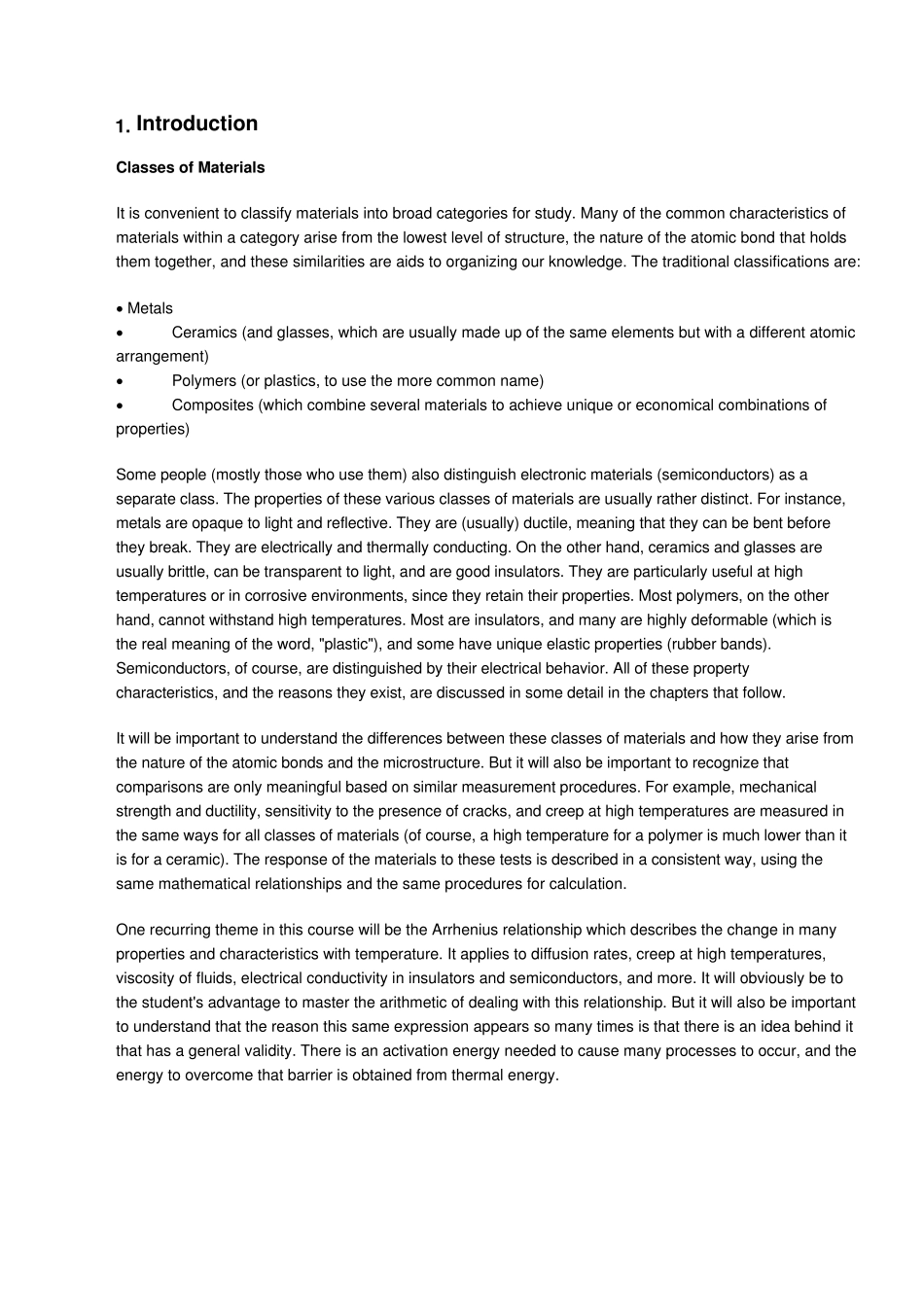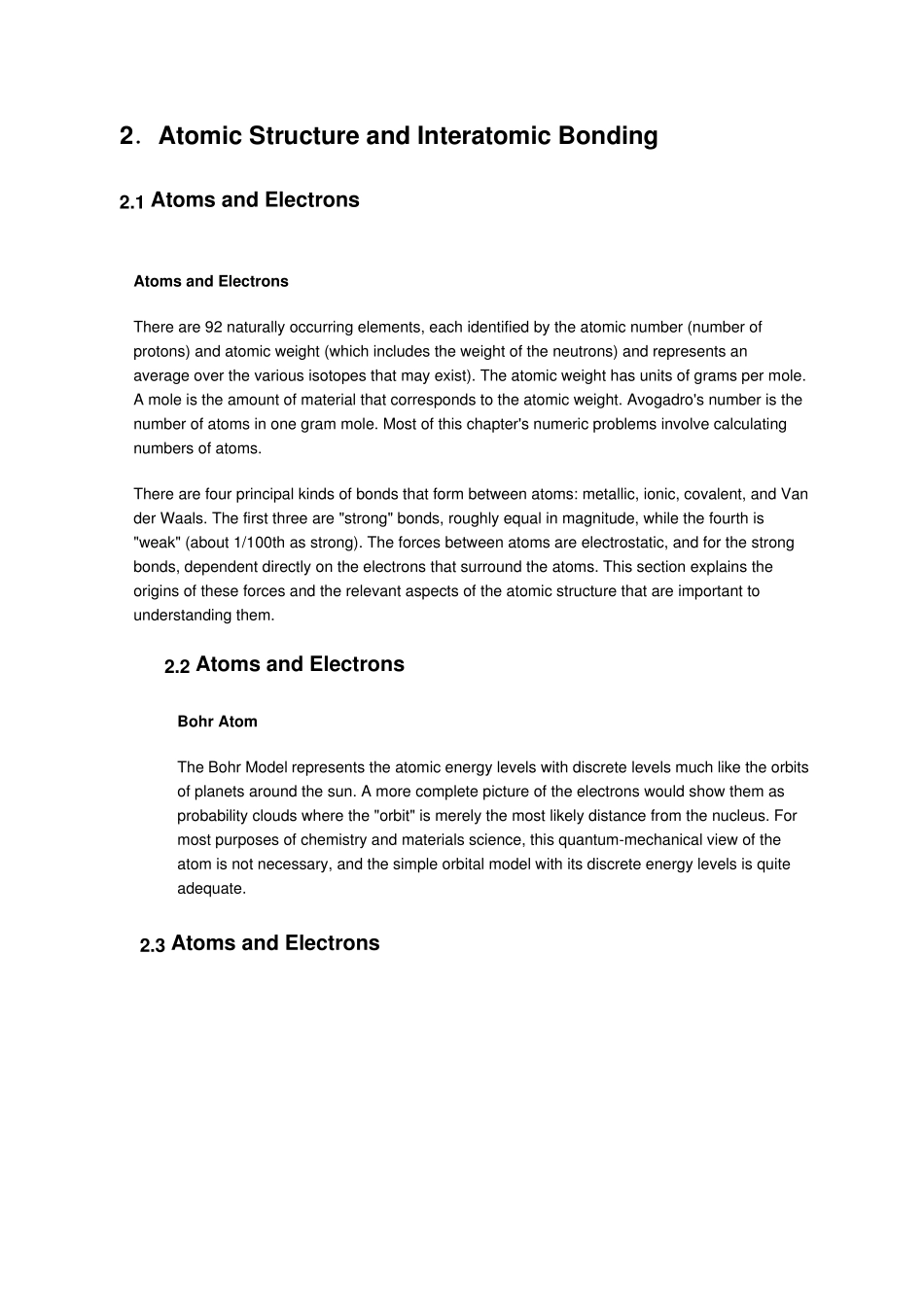材料科学导论 Fu ndamentals of Materials Science and Engineering (教案) 青岛科技大学 材料科学与工程学院 1. Introdu ction Classes of Materials It is convenient to classify materials into broad categories for study. Many of the common characteristics of materials within a category arise from the lowest level of structure, the nature of the atomic bond that holds them together, and these similarities are aids to organizing our knowledge. The traditional classifications are: • Metals • Ceramics (and glasses, which are usually made up of the same elements but with a different atomic arrangement) • Polymers (or plastics, to use the more common name) • Composites (which combine several materials to achieve unique or economical combinations of properties) Some people (mostly those who use them) also distinguish electronic materials (semiconductors) as a separate class. The properties of these various classes of materials are usually rather distinct. For instance, metals are opaque to light and reflective. They are (usually) ductile, meaning that they can be bent before they break. They are electrically and thermally conducting. On the other hand, ceramics and glasses are usually brittle, can be transparent to light, and are good insulators. They are particularly useful at high temperatures or in corrosive environments, since they retain their properties. Most polymers, on the other hand, cannot withstand high temperatures. Most are insulators, and many are highly deformable (which is the real meaning of the word, "plastic"), and some have unique elastic properties (rubber bands). Semiconductors, of course, are distinguished by their electrical behavior. All of these property characteristics, and the reasons they e...


